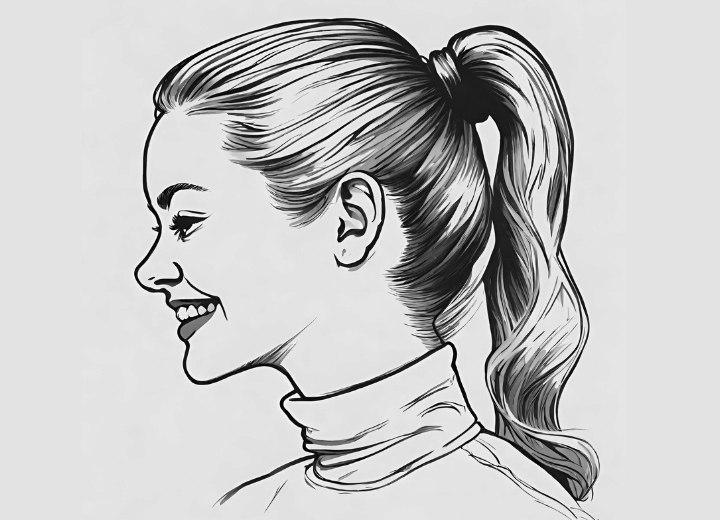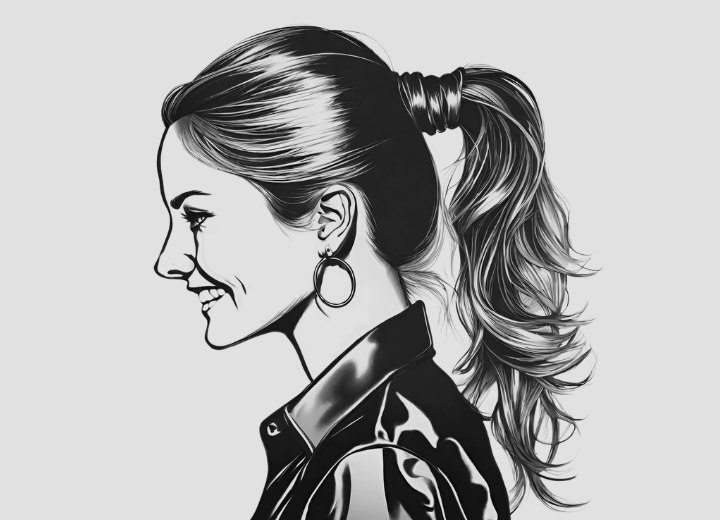Disadvantages of a ponytail

A: Your boyfriend might be onto something. While it might seem like an easy and fashionable option, there are reasons why always having your hair in a ponytail can be bad for its health. This question isn't new for me as a hairdresser, and I've noticed a growing worry among my clients about the possible negative effects of frequently tying their hair into a ponytail. It's important to understand the potential drawbacks associated with wearing your hair in a ponytail.
One of the primary concerns associated with wearing your hair in a ponytail too frequently is the risk of traction alopecia. Traction alopecia is a form of hair loss caused by continuous tension on the hair follicles.
The ponytail, especially when pulled tightly, can exert stress on the hair follicles, resulting in weakened roots and thinning hair over time. I have witnessed clients unknowingly contributing to their own hair loss by tightly securing their ponytails day after day.
2. Hair breakage and split ends
Securing your hair in a ponytail involves the use of hair ties or elastic bands. Over time, the friction between your hair and these accessories can lead to breakage and split ends. I've noticed that clients who frequently wear their hair in a ponytail are more likely to struggle with these issues.
The type of hair tie used to secure a ponytail can significantly impact the health of the hair. Many people opt for elastic bands with metal components, which can snag, break, or damage the hair during removal. Choosing hair-friendly alternatives, such as fabric-covered scrunchies, can help minimize the risk of breakage and damage.

A concern that arises from the frequent use of ponytails is breakage along the hairline. This can lead to a distorted hairline. The hair around the face is often more delicate than the rest, making it particularly susceptible to breakage caused by the constant tension of a tight ponytail.
To minimize breakage at the hairline, consider opting for looser hairstyles. Alternating between different hairstyles can help distribute tension more evenly across the scalp, reducing the risk of breakage in specific areas.
4. Scalp strain and tension headaches
Tying your hair in a ponytail often involves pulling the hair back tightly, leading to strain on the scalp. The continuous tension can result in discomfort and even tension headaches, as the scalp muscles are constantly under stress. Prolonged periods of tight ponytails may contribute to chronic headaches.
I always advise my clients to pay attention to how their scalp feels after wearing a ponytail for an extended period. If they experience discomfort or headaches, it may be a sign that the hairstyle is causing strain. Opting for looser hairstyles can be a healthier choice.
5. Hygiene
Ponytails can contribute to hygiene issues if not managed properly. When the hair is constantly tied back, it can trap sweat and oil against the scalp, creating an ideal environment for the proliferation of bacteria. This can lead to unpleasant odors, an itchy scalp, and even scalp infections.
Regular washing and proper hair care are essential to mitigate these hygiene-related concerns. The lack of airflow to the scalp due to tight ponytails can contribute to an unhealthy scalp environment. To maintain a healthy scalp, it's essential to allow your hair to breathe.
©Hairfinder.com
See also:
Tips for ponytails and pigtails
How to style hair